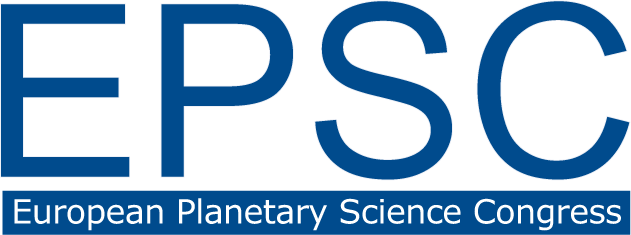Session programme
EXO – Exoplanets and Origins
Programme group coordinators: Ravit Helled, Anthony Boccaletti, Paul Estrada, Sarah Morrison
EXO1
Convener:
Olivia Venot
|
Co-conveners:
Vivien Parmentier,
Giovanna Tinetti,
Martin Turbet,
Ingo Waldmann
EXO2
Convener:
Martin Turbet
|
Co-conveners:
Emeline Bolmont,
Vincent Bourrier,
Ramon Brasser,
David Ehrenreich,
Christophe Lovis,
Stephen J. Mojzsis,
Olivia Venot,
Stephanie C. Werner
EXO4
Co-organized as TP10/OPS14
Convener:
Frank Sohl
|
Co-conveners:
Karen Appel,
Dan Bower,
Caroline Dorn,
Martin French,
Helene Massol,
Nadine Nettelmann,
Lena Noack,
Apurva V. Oza,
Gerd Steinle-Neumann
EXO5
Co-organized as TP19/OPS6
EXO6
EXO7
Co-organized as TP18/OPS7
EXO8
EXO9
Co-organized as OPS9
Convener:
Michiel Lambrechts
|
Co-conveners:
Yuri Fujii,
Anders Johansen,
Daohai Li,
Farzana Meru,
Thomas Ronnet
EXO10
Co-organized as TP11
EXO11
Co-organized as TP22/OPS5
Convener:
Shiblee Ratan Barua
|
Co-conveners:
Rosanna del Gaudio,
Felipe Gómez,
James O’Donoghue,
Conor Nixon
EXO12
Convener:
Vincent Bourrier
|
Co-conveners:
Navin Kumar Dwivedi,
Luca Fossati,
Maxim Khodachenko,
Ildar F. Shaikhislamov,
Aline Vidotto
ODA4
Co-organized as EXO13
Convener:
Anita Heward
|
Co-conveners:
Eleni Chatzichristou,
Livia Giacomini,
Brian Jackson,
Anastasia Kokori,
Julie Nekola Novakova,
Kala Perkins,
Padma Yanamandra-Fisher
TP23
Co-organized as MIT11/EXO14
Convener:
Felipe Gómez
|
Co-conveners:
Barbara Cavalazzi,
Janice Bishop,
Jessica Flahaut,
Fulvio Franchi,
Karen Olsson-Francis,
Monica Pondrelli,
Angelo Pio Rossi
TP14
Co-organized as OPS13/EXO15
Convener:
Maxim Ballmer
|
Co-conveners:
James Badro,
Renaud Deguen,
Alison Hunt,
Ana-Catalina Plesa,
Sebastiano Padovan,
Gregor Golabek,
Lena Noack
OPS3
Co-organized as EXO16
Convener:
Carly Howett
|
Co-conveners:
Shahab Fatemi,
Chris German,
Candy Hansen,
Jason Hofgartner,
Mika Holmberg,
Terry Hurford,
Hans Huybrighs,
Alison Murray,
Alyssa Rhoden,
Darci Snowden,
Anezina Solomonidou,
Joseph Spitale,
Federico Tosi
EXO18
Co-organized as TP7/OPS10/SB12


